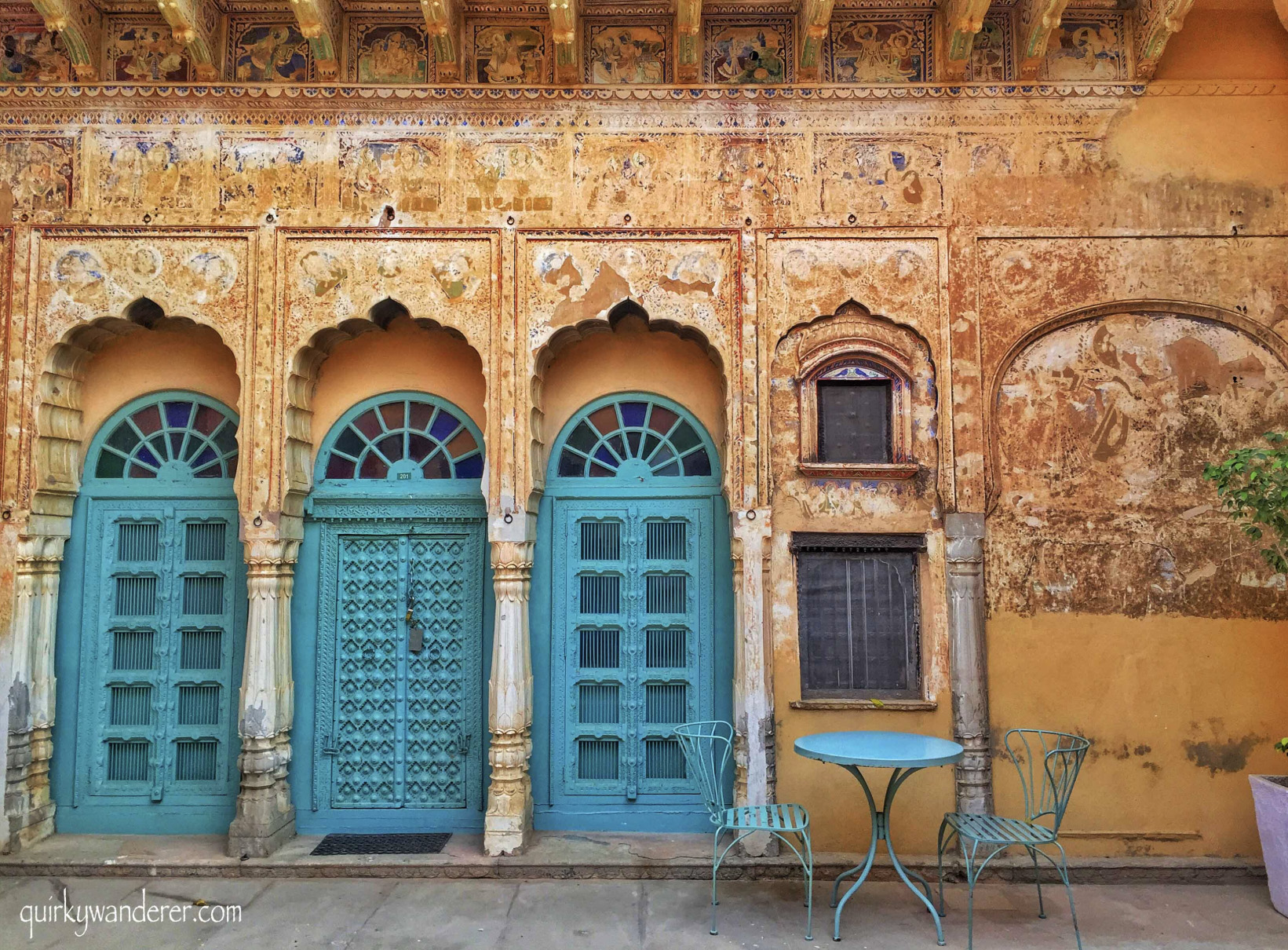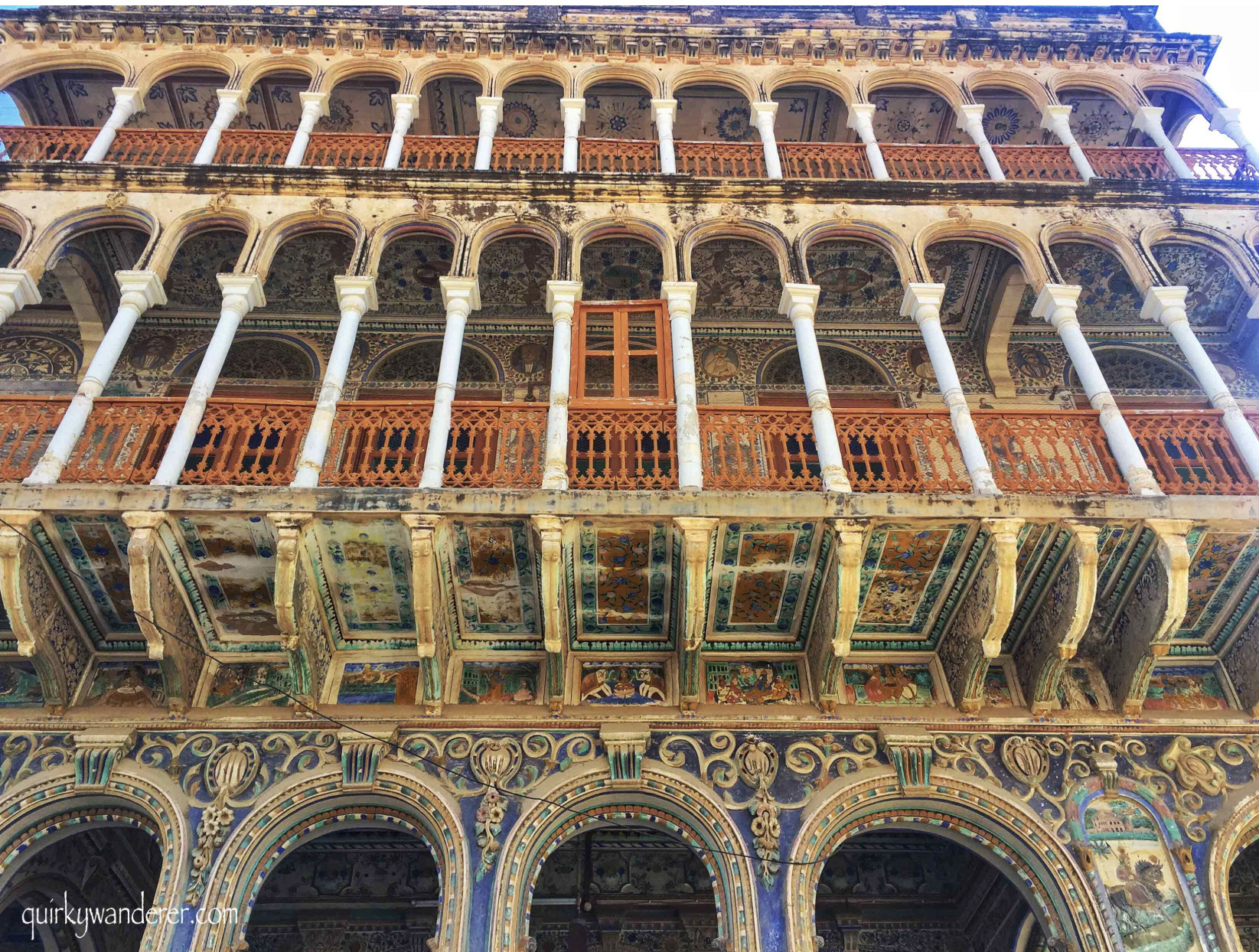Shekhawati Haveli, Shekhawat, Rajasthan (17th – 20th Century)**
Artist/Designer:
Project Location: India











Style/Period(s):
Art Deco
Primary Material(s):
Fresco
Function(s):
Residential Structure
Related Website(s):
Significant Date(s):
19th Century, 1800
Additional Information:
Publications/Texts in Print:
Beattie, Martin. "Hybrid Bazaar Space: Colonialization, Globalization, and Traditional Space in Barabazaar, Calcutta, India." Journal of Architectural Education (1984-) 61, no. 3 (2008): 45-55.
Rudolph, Susanne Hoeber, Lloyd I. Rudolph, and Mohan Singh. "A Bureaucratic Lineage in Princely India: Elite Formation and Conflict in a Patrimonial System." The Journal of Asian Studies 34, no. 3 (1975): 717-53.
Singh, Vinod Kumar. "A SURVEY OF THE STEPWELLS IN SHEKHAWATI REGION." Proceedings of the Indian History Congress 65 (2004): 1159-165.
Topsfield, Andrew. "Court Painting at Udaipur: Art under the Patronage of the Maharanas of Mewar." Artibus Asiae. Supplementum 44 (2002): 3-327.
Building Address: MOTI MAHAL CHAUPAR, SHAHPURA, Shahpura, Rajasthan 303103, India
Significant Dates: 17th to 19th centuries
Supporting Staff/ Designers:
Tags: India, Architecture, Interiors, 19th Century, 1800, Painting, Art Deco, Fresco, Shekhawati Haveli, Moroccan, Color, Rajasthan,
The term Haveli translated means " closed space " in Persian. Shekhawat is an area in Rajasthan and Shekhawati Haveli's are all the Haveli's within that region. The frescos of this region reflect the cultural sensibilities of the traders and rulers. They were designed to impress. The Shekhawati Haveli is an umbrella for all the Haveli's having the same fresco like appeal within this region. I found this particularly interesting as this is one of the projects that has oodles of color and very intricate fresco painting which gives it an almost Moroccan or completely different appeal as compared to other Indian monuments and spaces. These structures were inspired by palaces & king's abodes, but they were made in a manner of localized grandeur for laymen through the intricacy of wall murals and fresco.
Viewers should treat all images as copyrighted and refer to each image's links for copyright information.